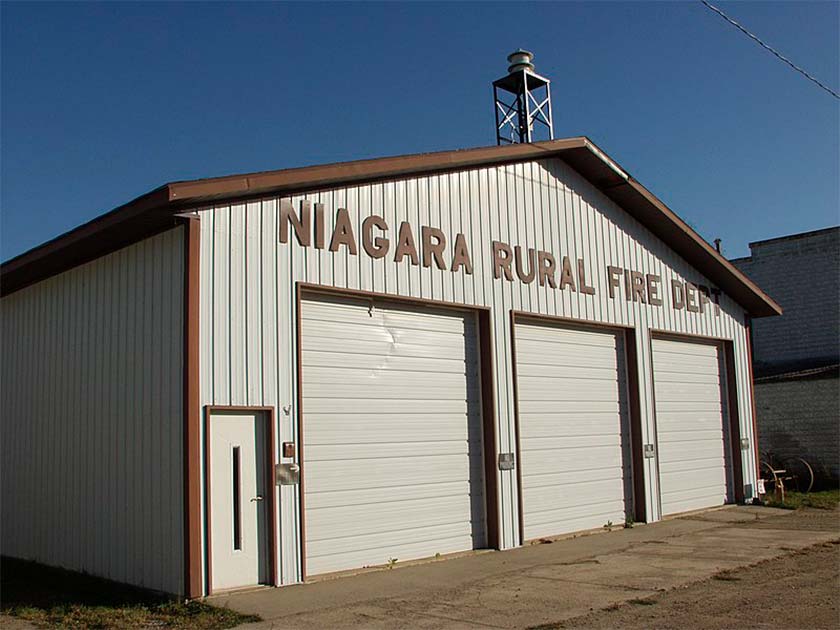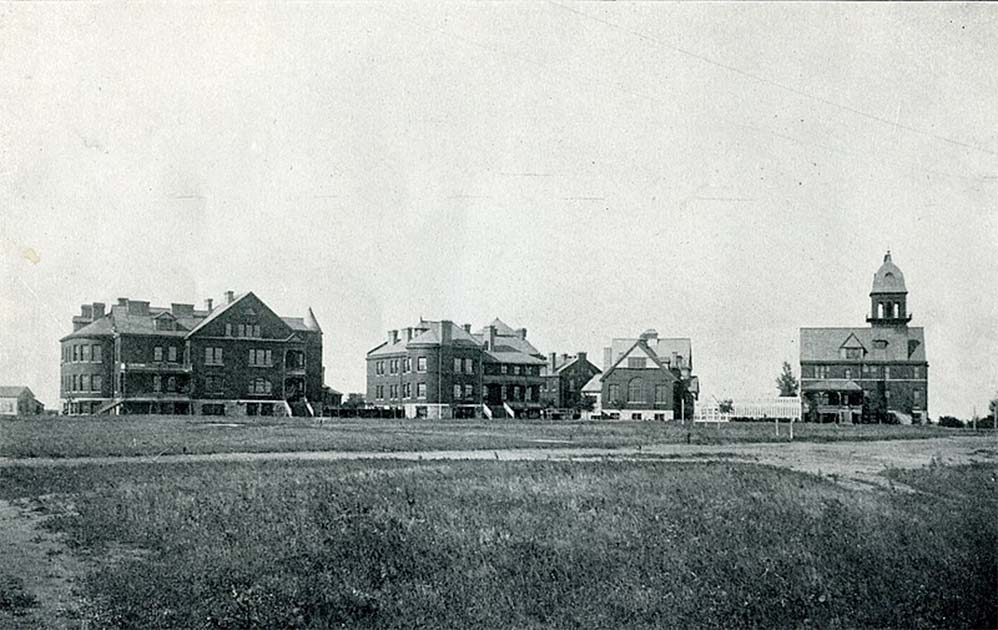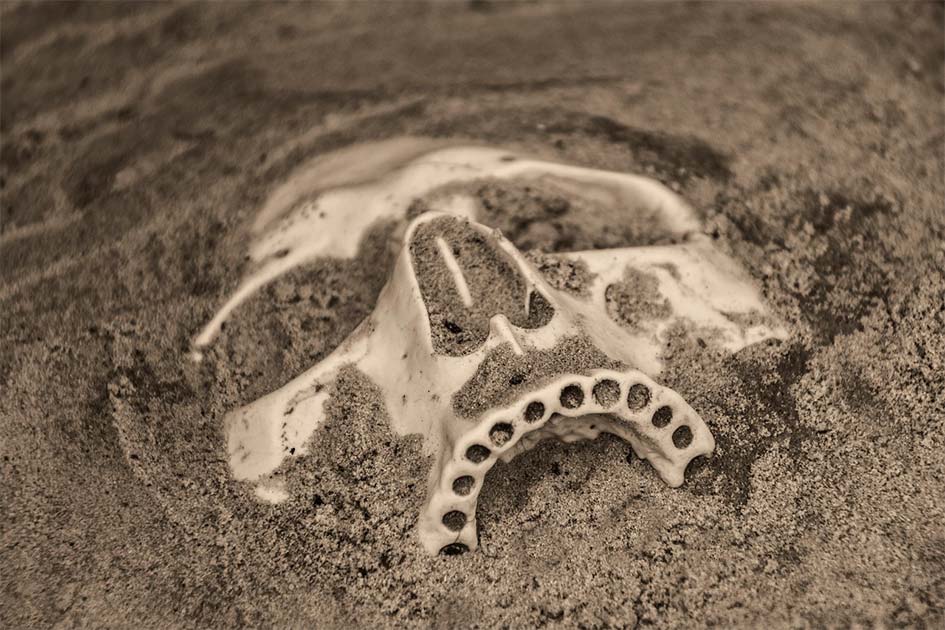The few residents of Niagara, North Dakota, had come to fear being woken in the night. Again and again the peace quiet of the darkness would be broken by a man riding through town, screaming at the top of his lungs.
The farmer was named the “Midnight Rider” after this new strange behavior developed in the early 1900s. For seemingly no reason, the Midnight Rider would ride his horse at full speed through the town while screaming, scaring and annoying the residents who were trying to sleep.
But this is only part of the story. The tale of the Midnight Rider is also one of the most legendary murder cases in the state of North Dakota, and the victims are still unidentified to this day.
Eugene Butler
Eugene Butler, a.k.a “The Midnight Rider,” was born in 1849 in Niagara County in Royalton, New York. He had family roots in Braintree in the county of Essex, England, and was said to come from a “prosperous family”.
Around 1848 (the exact date varies by account), the Midnight Rider and several other men from New York accepted the offer for free land in the Dakota Territory that the United States was offering after the Native Americans were forcibly removed from their land. The men traveled to Grand Forks County and built the small town of Niagara, a homage to their New York origins.

Eugene Butler developed a successful farm that covered 480 acres (194 hectares) of land. A few years after he settled in North Dakota, Butler’s success had made him the wealthiest farmer in the area. His estate and land holdings were worth around $1.5 million today.
Butler kept to himself and was only seen when he needed to conduct business in Larimore, a town close to Niagara. He was never married, was not social, avoided unnecessary contact with his neighbors, and lived/managed his farm alone.
The only people who were seen at the farm were farmhands during the summer months that were hired to work on the farm. Over time, and perhaps prompted by this isolation, his mental health began to decline.
The Midnight Rider
Before being given the name the Midnight Rider due to his frantic night horseback rides accompanied by his own screaming, Eugene Butler exhibited other strange behaviors. The Midnight Rider was known to experience hallucinations and paranoia.
He was convinced that all the local widows were madly in love with him and desperately wanted to become Mrs. Eugene Butler, which made him rather angry. His paranoia and hallucinations also included believing that there were invisible people chasing him and trying to break into his home to steal his money. He also refused to let anyone photograph him because he was convinced the camera would steal his soul.

As his mental state further deteriorated (around 1906) and the Midnight Rider’s evening exercises began to annoy the residents of the county, he was involuntarily admitted to the North Dakota State Hospital in Jamestown, which most people called the “North Dakota Hospital for the Insane.” It is not stated in any articles about the Midnight Rider, but Butler likely had schizophrenia, at the time still called dementia praecox.
When the police and hospital staff went to pack up the Midnight Rider’s belongings, they were shocked to discover more than $7,600 in cash, checks, a large amount of gold, and several sizable bonds from the US government. The Midnight Rider was, without a doubt, the wealthiest patient to have been remanded to the Jamestown hospital.
Hospital records and staff said the Midnight Rider was primarily harmless, only causing trouble at “isolated times,” and was nonviolent. His hallucinations continued under treatment, and he often asked the nurses and aides if they heard anyone talking about him. In 1911, the Midnight Rider died in the hospital of natural causes at the age of 62.
The Estate
After the Midnight Rider rode into the afterlife, portions of his large estate were split among his remaining relatives in New York or were sold as new land. In 1915, the new owners of the Midnight Rider’s large farmhouse sent construction workers to the site to begin renovations to the home.
One of the workers was digging a cellar underneath the house when he discovered human skeletal remains. The police were summoned, and a total of 6 complete skeletons were found. In one pit were five individuals’ remains, and the sixth was about 10 feet (3 meters) away alone. The ages and genders of the skeletons were unknown even after they had been removed from underneath the house.
The police discovered that the Midnight Rider had removed his victims’ clothing and burnt them before burying the corpses, which meant clues as to the identities of the deceased simply didn’t exist. The police found that each of the victims had crushed skulls, which indicated that the individuals were likely killed by blunt-force trauma to the head with a sharp object. Two bodies had their legs broken which was assumed to make burial easier.
- Stanley Meyer’s Murder and the Water-Powered Car
- The Blood Countess of Hungary: Was Elizabeth Báthory a Vampire?
There were many different theories about who the victims were. One theory was that the deceased had been related to the Midnight Rider, but they were not relatives. Another theory was that the five bodies found together were two female housekeepers and their children.
A third theory was that the remains were all men and were likely vagrant farmworkers who worked on the farm. The fourth theory was that one of the bodies was an African American, along with housekeepers and their children. As you can see, the multiple theories all confirmed one thing: the authorities simply did not know.
The Midnight Rider’s neighbors told the police that one of the few times he spoke with them, he complained about how his hired help kept trying to steal from him. If this was true or simply a hallucination is unknown.

There were no people missing from Niagara and the two neighboring towns of Shawnee and Larimore who were unaccounted for, let alone entire families. The victims were people with lives, yet no one reported anyone disappearing suddenly.
Can DNA Help Us?
Back in the early 1900s, there was no such thing as forensic investigations or DNA collection, so the only evidence that the police had were the skeletons of six people. Today mitochondrial DNA has been used to solve crimes by identifying genetic relatives from a sample of DNA.
Testing the bones of the Midnight Rider’s victims is however almost impossible. Newspaper reports mention that hundreds of people came to watch the investigation and grab a bone or two for a sick souvenir. The police said they placed the bones into a box, and when reexamined at the police office, it was noticed that several bones were missing.
To make matters worse, the remaining bones have now disappeared entirely. They cannot be found in evidence storage, and there is a chance that the bones were thrown out after several years while cleaning out storage. No law enforcement department in the state has the bones in its possession.
Individuals stole bones from the scene, and if one of the stolen bones was found, it could be used to identify at least one victim. So be sure to check your attic, garage, or storage unit to see if one of your ancestors has a bone amongst the remains of their belongings. You might just find the key that will crack the case wide open.
Top Image: The Midnight Rider terrified the people of his town with his nighttime rides, but after his death something far worse was discovered about him. Source: Steves_AI_Creations / Public Domain.